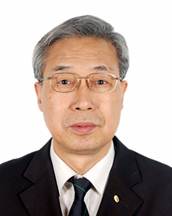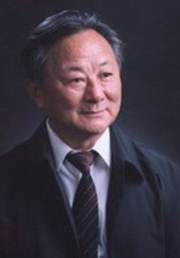Academicians
Zhong-Can Ou-Yang, dean of the school of physical sciences, USTC, professor in Theoretical Physics. He graduated from the Automatic Control Department of Tsinghua University in 1968, held master degree of Solid State Physics in 1981, and got the Ph. D degree in Optical from Tsinghua University in 1984. From 1985 to 1986 he was a pos-doctor in the Institute of Theoretical Physics, and went to work in Freie University Berlin as a Humboldt fellow in 1986. He was associated researcher in Institute of Theoretical Physics in 1989, and was promoted to be a researcher in 1992. He was elected as Academician of Chinese Academy of Sciences in 1997. From 1998 to 2007, he was the director of Institute of Theoretical Physics, CAS. Now he is the chairman of Scientific Committee in ITP.
Now he focus on the research of liquid crystal, the theory about biological membrane, and the research about the elasticity and protein folding of DNA biomacromolecule which is the interdisciplinary of physics, chemistry and biology.
In 1993, he won Achievement in Asia Award of Overseas Chinese Physics Association, in 1994 got the first " Guoshi " Postdoctoral Award, in 1995 the First Class Prize of Nature Scientific Award of Chinese Academy of Sciences, in 1996 he was selected as the Young Scientist of outstanding achievement by National Ministry of Personnel, and in 1999 he won the Second Class Prize of National Nature Scientific Awards of Chinese Academy of Sciences as well as the “Chou Peiyuan” Physics Prize.
E-mail: oy@itp.ac.cn

GUO Guangcan (郭光灿)
Professor Guang-Can Guo, was born on Dec. 9th, 1942 at Huian, Fujian province. He graduated from the Department of Radio Electronics, University of Science and Technology of China (USTC) in 1965. He was a visitor professor of Toronto University, Canada, from September, 1981 to September, 1983. He is a adjunct professor of school of physics in Peking University since 2005. Prof. Guo was elected as Academician of Chinese Academy of Sciences in 2003, and was elected as the Academy of Sciences for the Developing World in 2009.
Professor Guo is currently the director of the Key Laboratory of Quantum Information, the director of Chinese Physical society, and Chinese Optical Society. He is also the director of the National quantum optics committee and the Managing Editor《International J. of Quantum Information》. Prof. Guo is the chief scientist of National Fundamental Research Programs (973 project): “Quantum Communication and Quantum Information Technology”, and “Physical implementation of Quantum Communication and Quantum computing”. He is also the chief scientist of the Innovation Program of the Chinese Academy of Sciences, Chinese National Natural Science Innovation Funds. He has won the second rank National Natural Science prize, He Liang and He Li Prize, the first rank Natural Science prize of Anhui province, the major science and technological achievement award of Anhui province in 2007. He was elected as outstanding researcher of the Chinese Academy of Sciences and outstanding teacher of the Chinese Ministry of Education. Prof. Guo has trained 69 Ph.D’s, among them 4 have won National outstanding Ph. D thesis award.
Prof. Guo’s major research interests are in the theoretical and experimental study of quantum optics, quantum cryptography, quantum communication, and quantum computing.
E-mail: gcguo@ustc.edu.cn
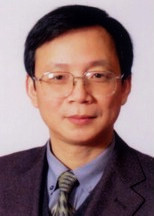
HOU Jianguo (侯建国)
Professor HOU Jianguo is a member of the Chinese Academy of Science, president of USTC. He received his Ph.D. in condensed matter physics from USTC in 1989. He is the recipient of the national award (grade two) for natural science, Ho Leung Ho Lee, Qiushi, and Tan Kan Kee awards, and is the supervisor of an author of the national excellent doctoral thesis award. His main research interests focus on characterizing and manipulation at the single molecule scale on surfaces using scanning tunneling spectroscopy.
AWARDS and HONORS:
1995 National Distinguishing Young Scholar Research Foundation Award
1995 President Research Foundation Award, Chinese Academy of Sciences
1997 Natural Science Award (first-class), Chinese Academy of Sciences
1999 Distinguishing Young Scholar in Physics Award, “QiuShi” Fundation (Hong Kong)
2001 Distinguishing Research Award, China Association for Instrumental Analysis
2002 Achievement in Asia Award (AAA) of the Overseas Chinese Physics Association (OCPA)
2003 Academician of Chinese Academy of Science
2003 Natural Science Award (first-class) of Anhui Province
2004 Fellow of The Third World Academy of Science (TWAS)
2005 Excellent Post-Doctor Award in China
2005 National Natural Science Award (second-class) of China
2007 The Holeung Ho Lee Advancement Prize
2008 TAN KAH KEE Science Award (Chemistry)
E-mail: jghou@ustc.edu.cn
1961.9-1965.6 Institute of Physics, Chinese Academy of Sciences, M. S.
1965-1971 Institute of Physics, CAS, research assistant
1971-1974 Changchun Semiconductor Factory, technician
1974-1976 Hefei Controlled Thermonuclear Reaction Research Station (now as Institute of Plasma Physics), research assistant
1976-present University of Science and Technology of China
Research interest:Superconductivity; Colossal magnetoresistance; Charge-orbital-spin ordering;
Honors:1."The research on electro-magnetic behaviors of the transition metal oxides (sulphides)", National Natural Science Award (2nd Class), 2009
2."Award for Supervisors of National Excellent Doctoral Dissertations", Ministry of Education & the Academic Degrees Committee of the State Council, 2002
3."The fundamental research on the microstructure and superconductivity of the high-Tc superconductors", First Class Natural Science Award of Chinese Academy of Sciences, 1993
E-mail: zhangyh@ustc.edu.cn
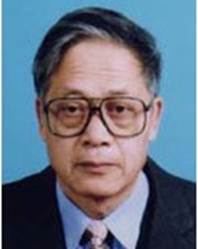
XU Zuyan (许祖彦)
Xu Zuyan, Academician of the Chinese Academy of Engineering, is engaged in research on tunable lasers, all-solid-state lasers and nonlinear optical processes. He has discovered the general retracing behavior of phase matching in nonlinear optical crystals. His group has developed a multi- wavelength optical parametric oscillator, the compound cavity tuning technique for optical parametric oscillators, and high power ns, ps and fs optical parametric systems with wide tuning. In collaboration with others, he has investigated the deep ultra-violet£¡¡ìDUV£© laser harmonic generation and hold several patents. They have successfully demonstrated the six- harmonic generation of the 1.06m and a DUV widely tunable laser. His group has also developed high power all-solid-state red, green and blue lasers and large screen size laser color display system. He awarded 10 prizes, including a 2nd class National Invention Prize, a 2nd class National Prize for Science and Technology Progress, and a 1st class Prize of Chinese Academy of Sciences for Science and Technology Progress. He also won the Ho Leung Ho Lee Foundation Prize for Sciences and Technology progress, and the Qiu Shi Science and Technology foundation group award for Distinguished Academic Achievement. At present, he is an Advisor of the State Key Program for Basic Research, Advisor of the National High Technology R&D Program, and Member of the National Major Program Selection Board.
E-mail: zyxu@mail.ipc.ac.cn

PAN Jianwei (潘建伟)
Pan Jianwei,born in 1970, from Dongyang, Zhejiang, China, entered USTC as an undergraduate student in 1987, and got his BS and MS degrees from USTC respectively in 1992 and 1995.
After that, he worked as an instructor in the univerisity. One year later, he pursued his doctoral study in the Institute for Experimental Physics of Vienna University and then received his PhD degree in 1999.
After two-year postdoctoral research in University of Vienna, he joined in USTC in 2001 as a young professor. In the past years, Pan and his group have published more than 80 important papers, including 10 in Nature, 60 in PRL, 5 in Nature Physics, 4 in Nature Photonics ,and more other high-profile journals.
E-mail: pan@ustc.edu.cn
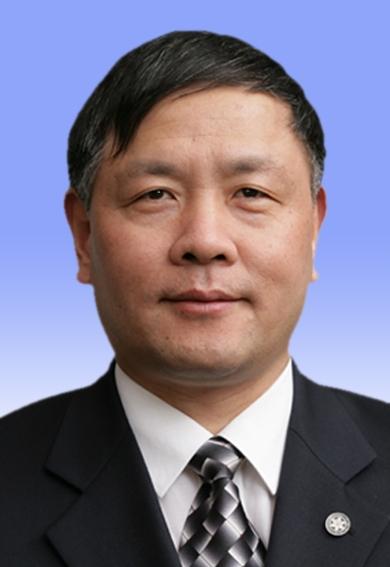
SHEN Baogen (沈保根)
Shen Baogen, academician of the Chinese Academy of Sciences (CAS), professor at the Institute of Physics, CAS, director of the State Key Laboratory of Magnetism, director of Applied Magnetics Society, the Chinese Institute of Electronics, and director of Magnetism committee, Chinese Physical Society. He was born in Pinghu, Zhejiang province in September, 1952, and graduated from Department of Physics of USTC in 1976. After graduation, Prof. Shen has been engaged in research on magnetism and magnetic materials and discovered a variety of new magnetic materials. In 1995, he obtained support from National Natural Science Funds for Distinguished Young Scholar of China, and in 1996, he was honored as an "Expert with Outstanding Contribution to Science" by CAS. He won the “Outstanding Young Researcher Award” from the QiuShi Foundation for Sciences and Technologies and “Ye Qisun Physics Prize” from the Chinese Physical Society. In 2011, he was elected as a member of the Chinese Academy of Sciences.
E-mail: shenbg@aphy.iphy.ac.cn
 ZHAO Zhengguo(赵政国)
ZHAO Zhengguo(赵政国)Zhengguo Zhao, born in 1956 in Jing County of Hunan Province, graduated from the University of Science and Technology of China (USTC), and received his Ph.D. from USTC in 1988. He worked as a post-doctor for the Beijing Spectrometer (BES) at Beijing Electron Positron Collider (BEPC) in the Institute of High Energy Physics (IHEP) of the Chinese Academy of Sciences (CAS) from 1988 to 1990. From 1990 to 1997, he was a post-doctor and research associate at Institute for Particle Physics (IPP) of Swiss Federal Institute of Technology (ETHZ). He was recruited to IHEP of CAS as the first “CAS 100 Talent Program” member of IHEP in 1997, and led the BES Collaboration and the Physics Division of IHEP of CAS. He joined Physics Department of University of Michigan as a visiting professor and senior research scientist (UM) for the ATLAS experiment from 2001 to 2008. He was recruited to USTC as “National Thousand Talent Program” in 2008 and is chair professor of the Modern Physics Department of USTC, director of the Center for Particle Science and Technology of USTC, director of Cooperative Innovation Center for Particle and Interaction that consists of nine universities and two institutes of CAS. He continues doing the research at ATLAS and BESIII experiments. He was BESIII co-spokesperson from 209 to 2013. Because of his outstanding leadership at BES Experiment, particularly in the measurement of the hadron production cross section of the electron positron annihilation, and the important contribution to the detector construction and physics analysis of the ATLAS Experiment at the Large Hadron Collider (LHC) at CERN in Geneva of Switzerland, he was elected to be fellow of American Physics Society in 2012 and academician of the CAS in 2013, and the chair of the High Energy Physics Association of China in 2014. He won the National Science Fund for Distinguished Young Scholar in 1998, CAS President Outstanding Young Scientist Award in 2001, and Chinese National Natural Science Award in 2005.
Professor Zhengguo Zhao is a well-known physicist who has recognized experience and contribution to the experimental particle physics, including leading large-scale international collaboration in the development, construction and operation of particle detectors, as well as physics analysis.
When working at ETHZ, he and his collaborators built a high energy resolution bending crystal spectrometer, with which they precisely measured the strong interaction shift of the pionic hydrogen and deuterium, and for the first time observed the corresponding energy broadening of the ground states of the pionic hydrogen and pionic deuterium. These results are still the most precise experimental data for the determination of S wave scattering length of pion and nuclear scattering, which are important physics quantities for the development and test of Chiral perturbation theory.
As the BES spokesperson and the header of the Physics Division of IHEP from 1997 to 2001, he successfully led the BES collaboration to make great progress on the study of the physics with charm quarks and tau leptons. His particular contribution to the BES experiment is the precision measurement of the hadron production cross-section of the electron and positron annihilation in the energies between 2 and 5 GeV. This measurement clarified the inconsistent results from different experiments and improved the accuracy about a factor of three. The results played an important role for the indirect search for Higgs particles at the Large Electron Positron Collider (LEP) at CERN, namely the measurement of the Higgs mass from the Standard Model fit to the available electroweak data, and precision determination of the QED running coupling constant and the interpretation of the results of anomalous magnetic moment of the muon. The result was regarded as one of the most important contribution to the high-energy physics during the years from 2000 to when shifting LEP experiments to LHC experiments, and has been collected by Particle Data Book and quoted by some text book for high energy physics.
Since 2001 to present, professor Zhao has been working on the ATLAS experiment at LHC. He played an important role to the construction and commissioning of the ATLAS monitored drift tube (MDT) of the muon spectrometer, and made direct contribution to the physics with diboson production and the discovery of the Higgs particle, together with his students and collaborators.
E-mail: zhaozg@ustc.edu.cn
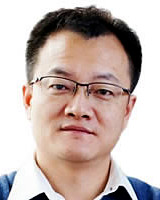 DU Jiangfeng(杜江峰)
DU Jiangfeng(杜江峰)Prof. Dr. Jiangfeng Du, Yangzi Professor at Hefei National Laboratory for Physical Sciences at Microscale and Dept. of Modern Physics of University of Science & Technology of China.
Prof. Dr. Jiangfeng Du is an expert in the area of magnetic resonance and quantum computation. He is focusing on the research of experimental quantum computation and some related fundamental quantum physics issues, using the electron/nuclear spin resonance (ESR & NMR) and optically detected magnetic resonance (ODMR) technologies. So far he has published more than 130 scientific papers, including 35 papers published in Nature, Science, Nature Physics, Nature Communications, and Physical Review Letters. His research achievements have received the second prize of 2012 National Natural Science Award, and Outstanding Achievements in Natural Science by the Ministry of Education of China (2011). One of his work, “Preserving spin coherence in solids by optimal dynamical decoupling” (Nature 461, 1265 (2009)), was selected as the “Top 10 Scientific and Technological Progresses of Chinese University” (2009) and the “Top 10 Scientific and Technological Progresses of China” (2009).
E-mail: djf@ustc.edu.cn
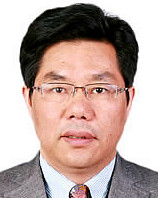 CHEN Xianhui(陈仙辉)
CHEN Xianhui(陈仙辉)Chen Xianhui, born in 1963 at Xiangtan of Hunan Province, received his Ph.D. from USTC in 1992. From that year, he became a faculty at USTC. He was promoted to be as a professor in physics in 1998, and served as the director of the CAS Key Laboratory of Strongly-coupled Quantum Matter Physics at USTC after 2014, and deputy director of High Magnetic Field Laboratory of CAS in 2015. He visited Institut für Nuclear Festkörperphysik at Forschungszentrum Karlsruhe and Max-planck Institut für Festkörperforschung at Stuttgart in Germany from 1994 to 1995, Japan Advanced Institute of Science and Technology at Ishikawa in Japan from 1998 to 1999, and Texas Center for Superconductivity at University of Houston in USA from 2001 to 2003, as a visiting scholar or professor. He has been engaged in research for the unconventional superconducting materials and strongly correlated electronic materials. He discovered new superconductors including fullerenes, copper oxides, iron-based compounds and organic hydrocarbons with fused benzene rings. His group has made a series of innovative achievements in the related fields and published more than 320 papers, including 3 in Nature, 1 in Science, 3 in Nat. Mater., 1 in Nat. Photonics, 4 in Nat. Nanotechnol., 2 in Nat. Phys., 4 in Nat. Commun., 3 in JACS, 2 in PRX, and 29 in PRL. Especially, he made breakthrough progresses in iron-based superconductors, for example, he discovered high-temperature superconductivity with Tc = 43K in SmFeAsO0.85F0.15 in 2008, realizing the high-temperature superconductivity for the first time under atmospheric pressure in a copper-free material, which has been cited by more than 1000 times. In the years 2014-2015, he made another breakthrough in two-dimensional materials for nano-devices by realizing field-effect-transistor in few-layer black phosphorus and finding quantum oscillation and pressure-induced Dirac-Half-metal state in this material.
He was supported by National Science Fund for Distinguished Young Scholars of China in 1998. He was employed as “Chair Professor of Chang Jiang Scholars Program” in 2003. During his research tenure, he has received many prestigious awards, including Chang Jiang Scholars Achievement Award (2009), Qiushi Outstanding Science & Technology Team Achievement Award (2009), Ye Qisun Physics Prize (2008-2009), the first prize of The National Natural Science Award (2013), and the 2015 Bernd T. Matthias Prize for Superconducting Materials (an international prize awarded for innovative contributions to the field) and so on.
E-mail: chenxh@ustc.edu.cn


